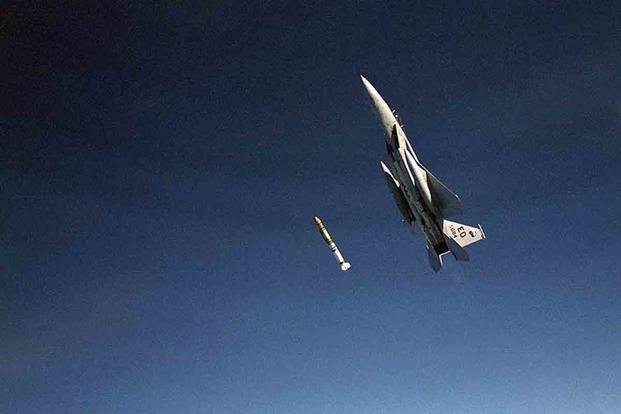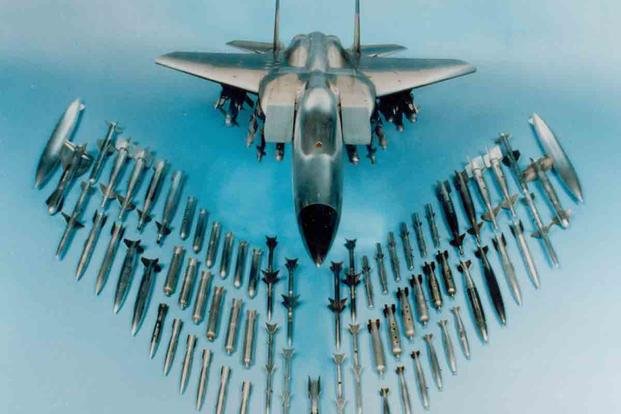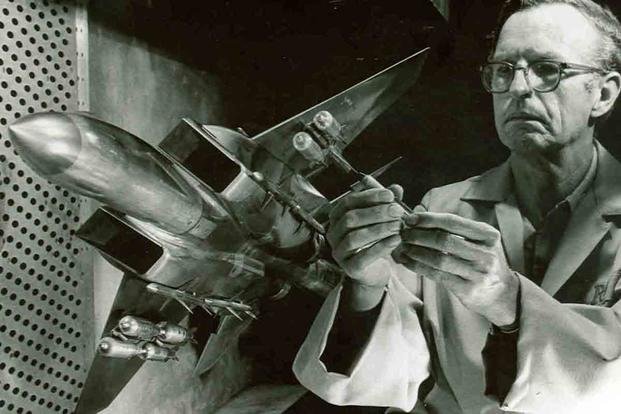In the late 1960s, the Air Force was looking for a new air superiority fighter. The U.S. military had learned a lot of important lessons in the skies over Vietnam. The F-105 Thunderchief was taking losses from obsolete enemy MiG-17s. The F-4 Phantom II fared better, but the MiG-21 often outmaneuvered it.
Then the Soviet Union unveiled its newest fighter, the MiG-25, one of the fastest fighters ever made. The Air Force began its search for a fighter that could offer maneuverability, speed, power and endurance. Most importantly, it had to be a match for the latest MiG. The result was the F-15 Eagle.
Fifty years later, the F-15 has multiple variants, including the celebrated F-15E Strike Eagle, a long-range interdictor that can be used for close-air support. In that same time period, American and allied F-15s have made some incredible feats, both on and off the battlefield -- feats that show why the aircraft has stuck around for so long.
1. An F-15 Lands with Just One Wing
Over the Negev Desert in 1983, the Israel Defense Forces were conducting a dogfight training exercise between F-15Ds and A-4 Skyhawks. During the exercise, Israeli pilot Zivi Nedivi collided with one of the Skyhawks. Nedivi felt a jolt and saw the fireball created by the collision before falling in a tight spiral.
He regained control and, despite being low on fuel, kicked on the afterburners and made his way to an airfield 10 miles away. He would have to land at twice the recommended speed, and barely managed to stop before hitting the safety barrier. It was only when he exited the plane that he noticed the wing was missing.
Although manufacturer McDonnell Douglas didn't believe the story at first, it was converted after seeing the photos. McDonnell Douglas credited the power of the engines and fuselage design with creating enough lift to keep it flying.
2. A 'Celestial Eagle' Shoots Down a Satellite
A specially modified F-15A took off from Edwards Air Force Base in California on Sept. 13, 1985. Its mission was to ascend to 35,000 feet and fire off its one weapon: an experimental, 18-foot, anti-satellite missile. The target was the degrading 2,000-pound Solwind P78-1 solar laboratory in low Earth orbit.
Pilot Maj. Wilbert "Doug" Pearson took the F-15A into a supersonic 3.8G climb at 68 degrees, nearly vertical. He slowed down to Mach 1 at just above 38,000 feet when the missile fired. Though the satellite was destroyed and the ASM-135 anti-satellite missile was a success, the program was discontinued as it was too costly. Pearson and his F-15 "Celestial Eagle" still have the only air-to-space kill in history.

3. The "Streak Eagle" Beats a Saturn V Rocket
Not long after the first F-15 was delivered to the Air Force in 1974, USAF test pilots began doing what they do best: pushing its limits. Between Jan. 16 and Feb. 1, 1975, the F-15, unpainted to reduce its weight, broke eight time-to-climb world records, three that were held by Soviet MiG-25s.
In its last record, the Streak Eagle would pull 4Gs into a 60-degree climb, accelerating to two times the speed of sound. It reached an altitude of 98,425 feet just 3 minutes, 27.8 seconds from brake release, and beat the Saturn V rocket's time to 50,000 feet by 10 seconds. The Saturn V is best-known for ferrying astronauts to the moon.
4. An F-15E Dropped a Bomb on an Iraqi Helicopter
The F-15E Strike Eagle isn't just for air superiority; it can also provide close air support with weapons like the GBU-10 laser-guided bomb. During the Persian Gulf War, F-15Es were often searching for SCUD missile sites to target. On Feb. 14, 1991, U.S. Air Force Capts. Richard "TB" Bennett and Dan "Chewie" Bakke were on one of those searches.
AWACS in their area detected an Iraqi Mi-24 Hind gunship operating near an ongoing Special Forces mission and ordered them to take it out. When the Hind began to accelerate, the F-15E couldn't get a missile lock, so they used a 2,000-pound GBU 10 instead. It was a direct hit that incinerated the Hind.
5. The F-15 Was Never Defeated in Air-to-Air Combat.

Since being first introduced in 1972, American and allied variants of the F-15 have racked up more than 100 aerial victories, most by the Israel Defense Forces, with zero losses. Besides Israel, Allied countries that are still flying the F-15 include Singapore, South Korea, Qatar and Saudi Arabia.
-- Blake Stilwell can be reached at blake.stilwell@military.com. He can also be found on Twitter @blakestilwell or on Facebook.
Want to Learn More About Military Life?
Whether you're thinking of joining the military, looking for post-military careers or keeping up with military life and benefits, Military.com has you covered. Subscribe to Military.com to have military news, updates and resources delivered directly to your inbox.
















